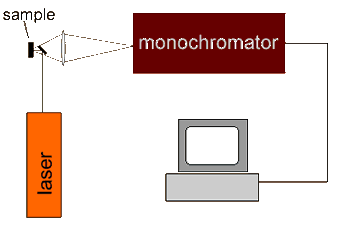|
| When light is scattered from a molecule or a solid most photons are elastically scattered. The scattered photons have the same energy as the incident photons. However, a small fraction of light is scattered at optical frequencies different from the frequency of the incident photons. The process leading to this inelastic scattering is the termed the Raman effect. The difference in energy between the incident photon and the Raman scattered photon is equal to the energy of a vibration of the molecule or lattice vibration of solid sample. A plot of intensity of scattered light versus energy difference is a Raman spectrum. | |
|
|
|

